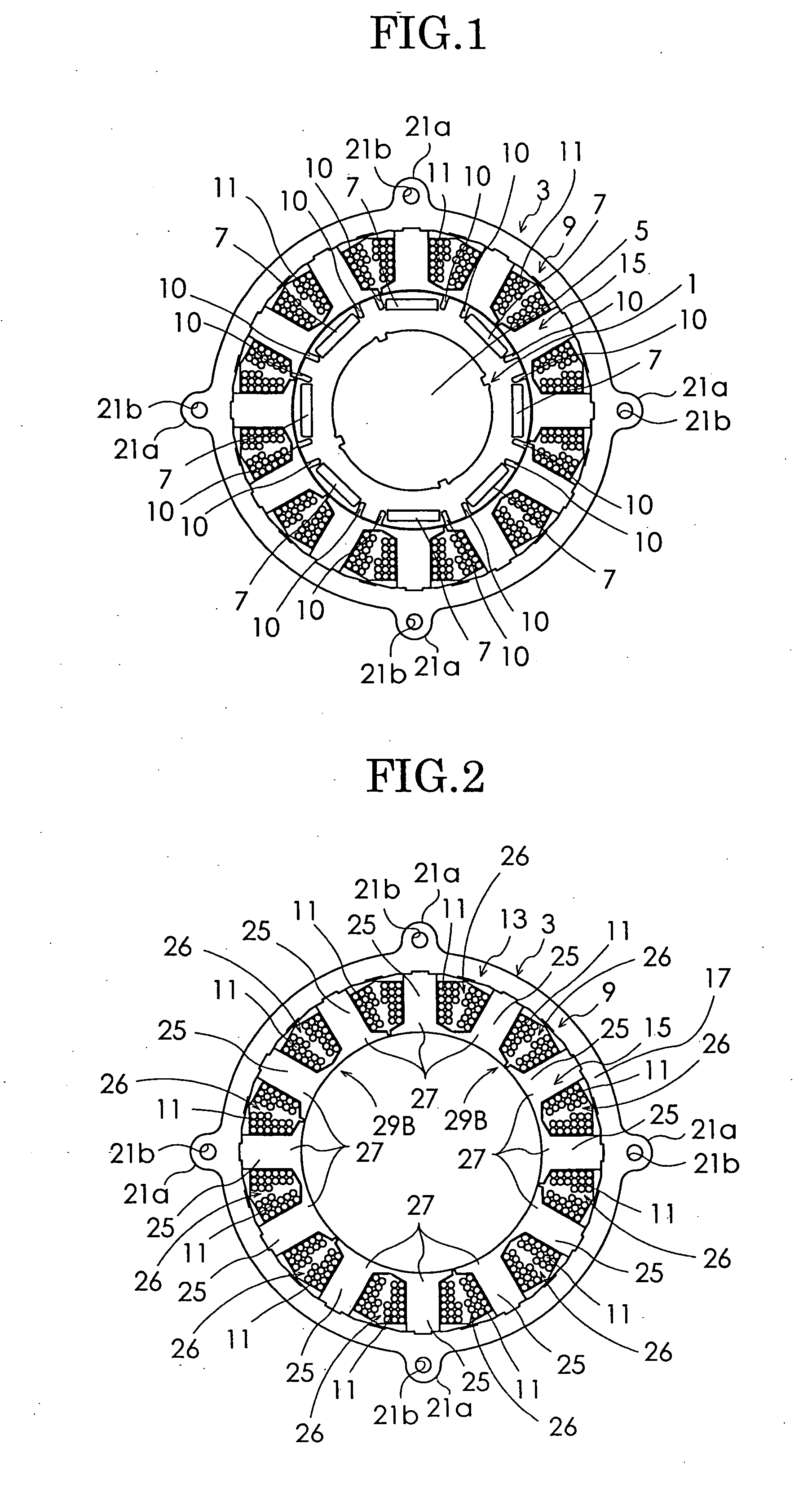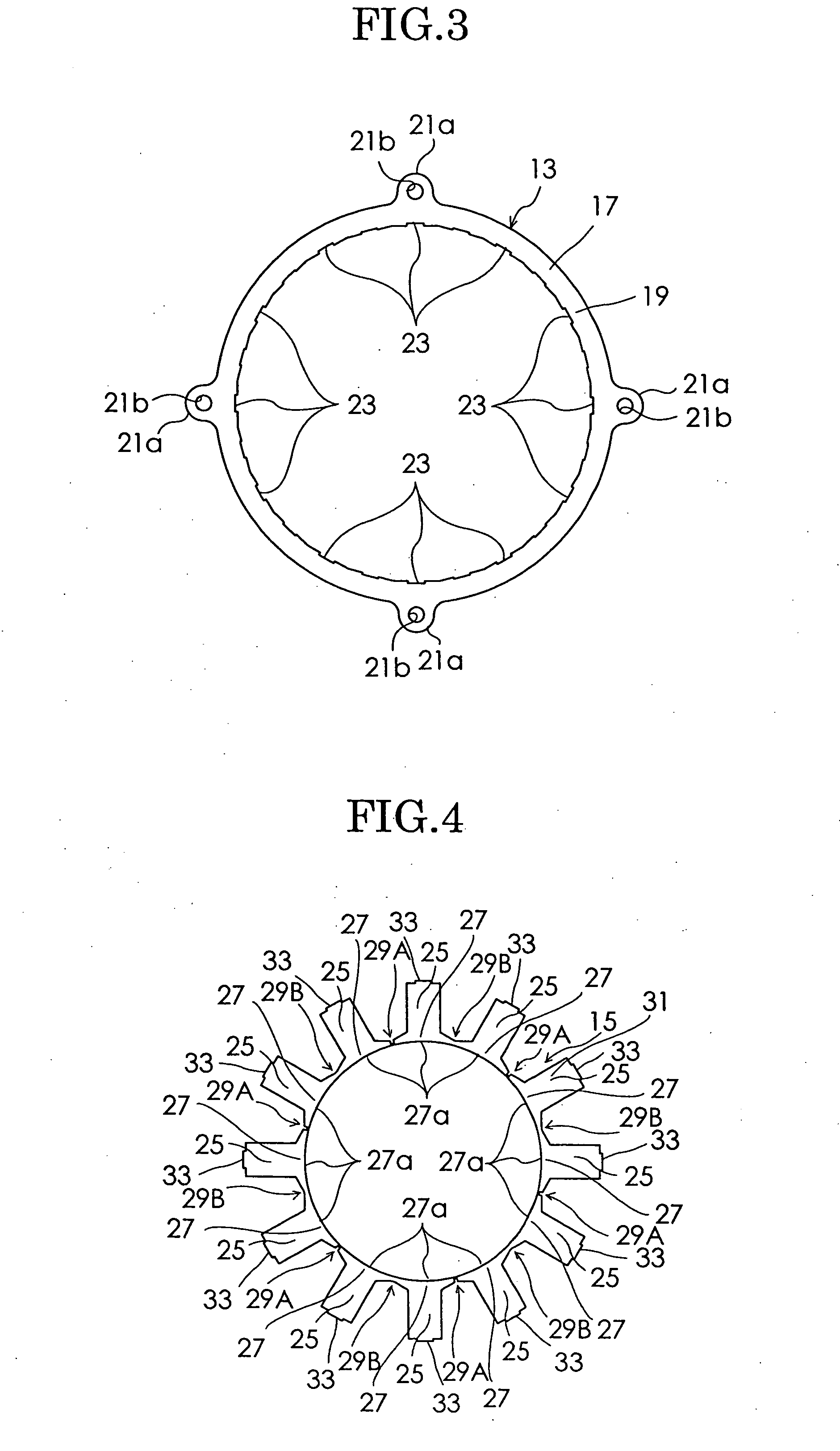Permanent magnet rotary motor
a permanent magnet, rotary motor technology, applied in the direction of dynamo-electric machines, electrical apparatus, magnetic circuit shapes/forms/construction, etc., can solve the problem of complex manufacture of motors, and achieve the effect of reducing cogging torque, easy wounding, and increasing torqu
- Summary
- Abstract
- Description
- Claims
- Application Information
AI Technical Summary
Benefits of technology
Problems solved by technology
Method used
Image
Examples
Embodiment Construction
[0036] Embodiments of the present invention will be described in detail with reference to drawings. FIG. 1 is a schematic diagram of a permanent magnet rotary motor according to a first embodiment of the present invention. As shown in FIG. 1, the permanent magnet rotary motor in this embodiment includes a rotor 1 and a stator 3. The rotor 1 includes a rotor core 5 of substantially a cylindrical shape and plate-like permanent magnets 7 constituting P (herein eight) permanent magnet magnetic pole portions embedded in the rotor core 5, at equal intervals in a circumferential direction of the rotor core 5. In this embodiment, one permanent magnet 7 constitutes one permanent magnet magnetic pole portion. On both sides of each permanent magnet 7 in the circumferential direction, a pair of flux barriers 10 each constituted by a cavity are formed. The rotor core 5 is constituted by lamination of a plurality of magnetic steel plates. The eight permanent magnets 7 are magnetized so that an N ...
PUM
 Login to View More
Login to View More Abstract
Description
Claims
Application Information
 Login to View More
Login to View More - R&D
- Intellectual Property
- Life Sciences
- Materials
- Tech Scout
- Unparalleled Data Quality
- Higher Quality Content
- 60% Fewer Hallucinations
Browse by: Latest US Patents, China's latest patents, Technical Efficacy Thesaurus, Application Domain, Technology Topic, Popular Technical Reports.
© 2025 PatSnap. All rights reserved.Legal|Privacy policy|Modern Slavery Act Transparency Statement|Sitemap|About US| Contact US: help@patsnap.com



